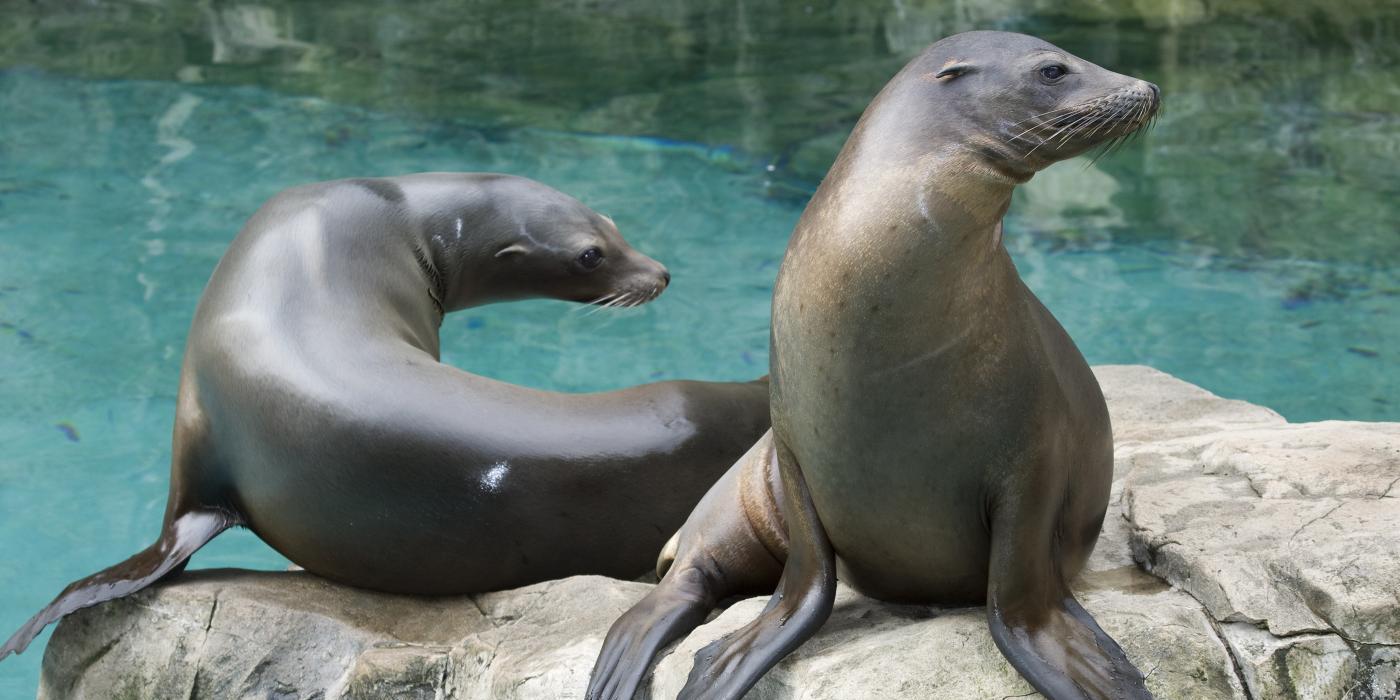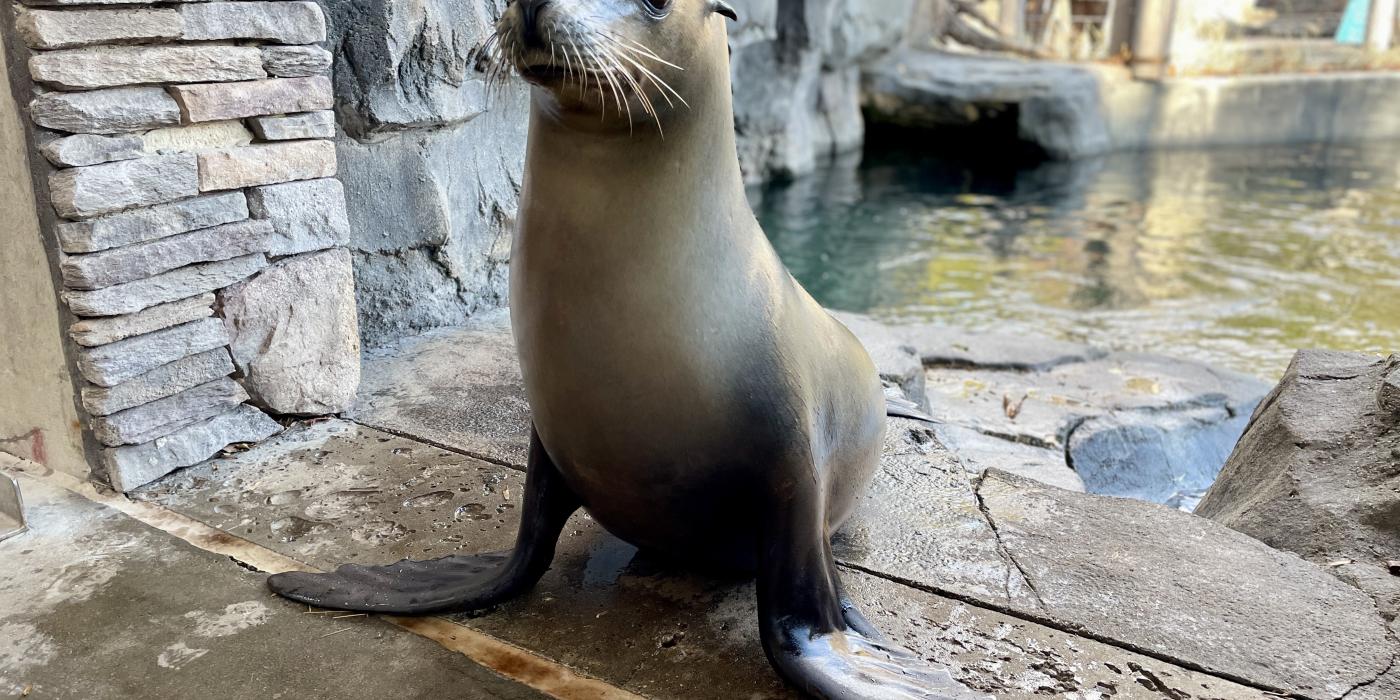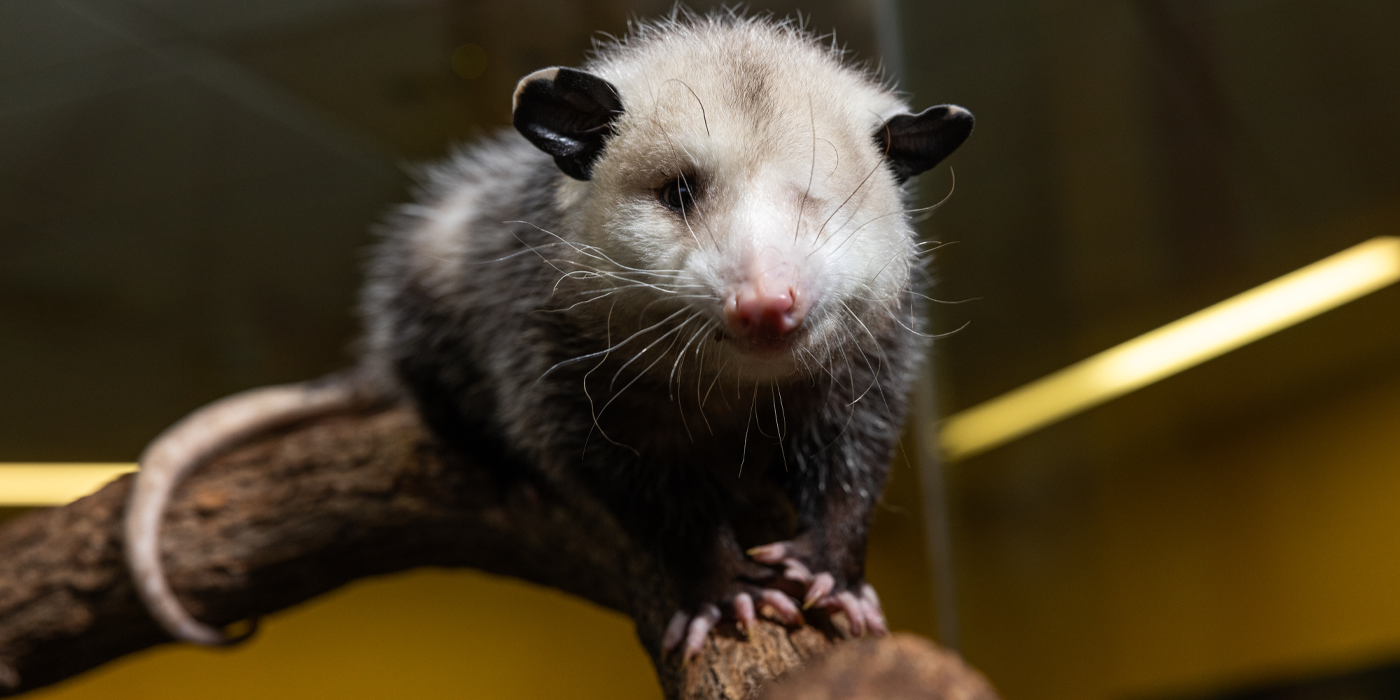New at the Zoo: Bald Eagle Acadia
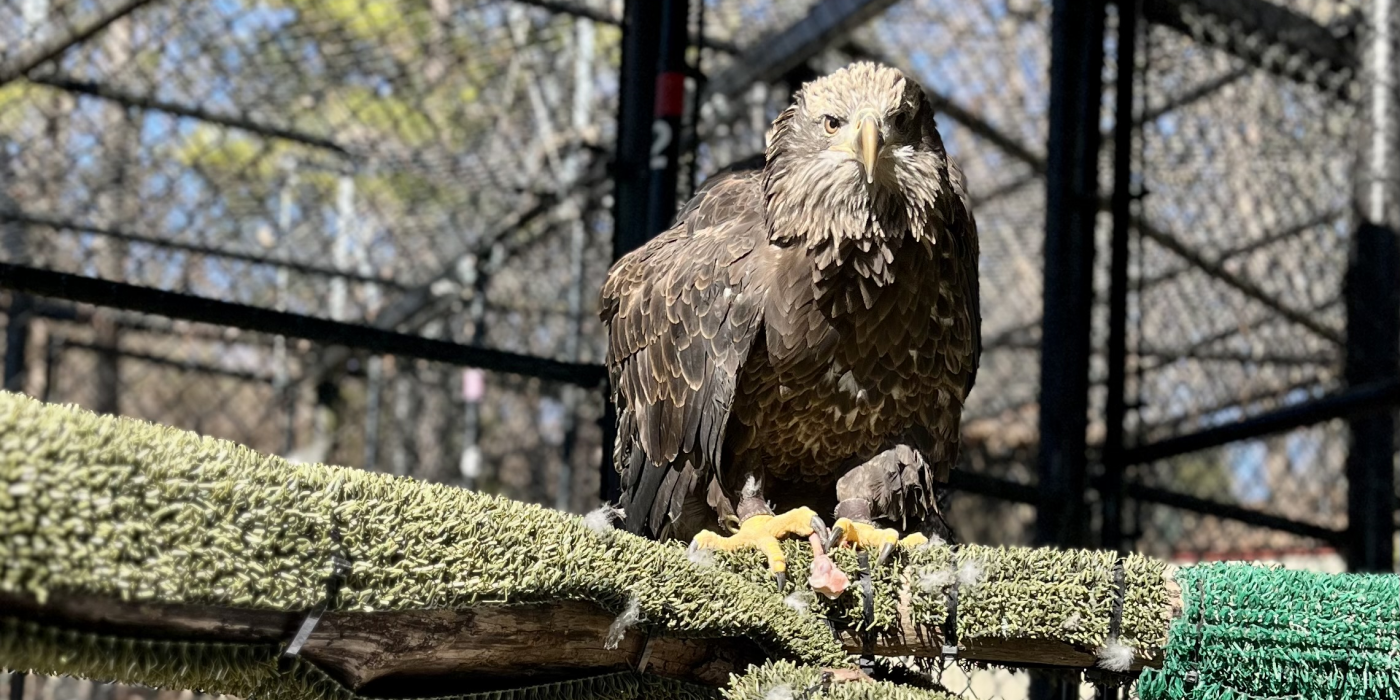
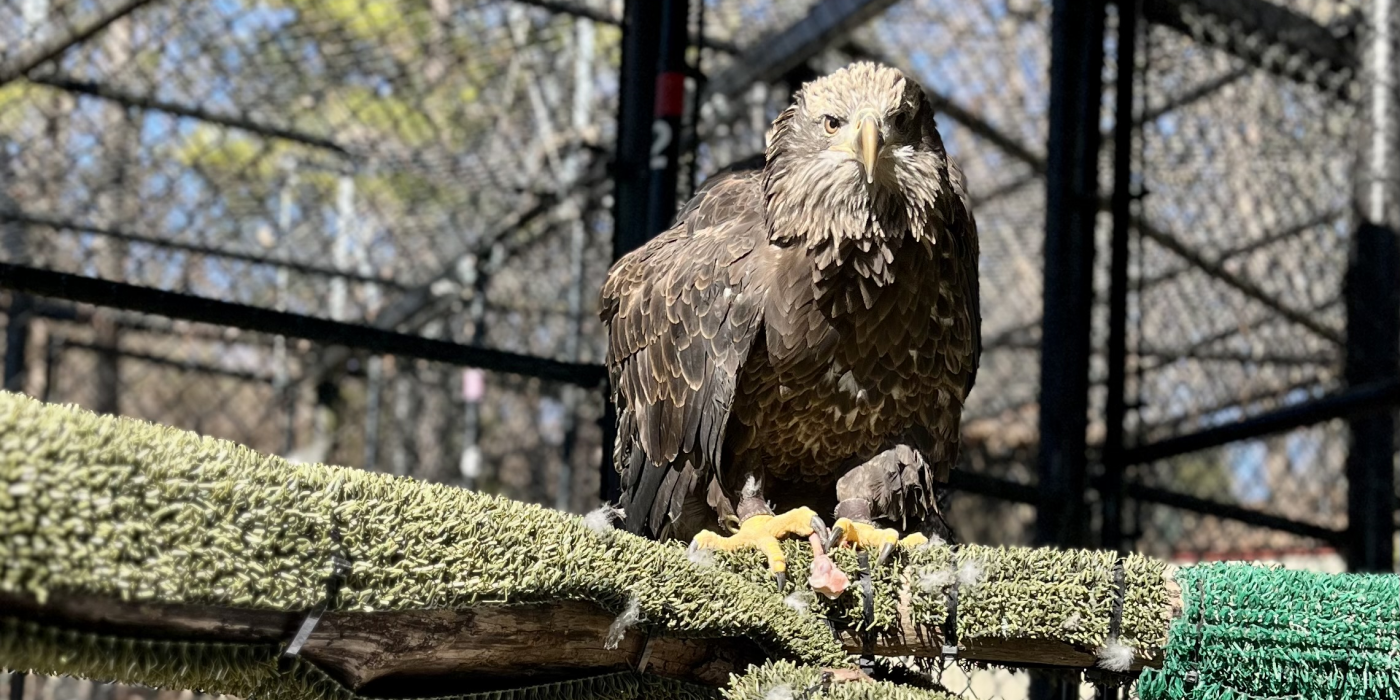
What are your favorite facts about bald eagles?
When visitors see a bald eagle up close, they are surprised to hear eagles typically weigh between 6 and 17 pounds. People think they weigh quite a bit more. Another fun fact is that an eagle’s vision is eight times greater than a human’s vision. They can spot food up to a mile away!
How does Acadia’s plumage compare to an adult female bald eagle?
Acadia has mostly brown feathers with some white. She also has a dark colored beak and eyes. Over time, Acadia will get more white feathers, her eyes will turn yellow, and her beak will turn yellow. At around age five, she will have a white head and tail, as adult eagles have.
What is Acadia’s personality like?
She is laid-back, curious and adaptable. Acadia seems to enjoy investigating new enrichment items and has handled all the challenges she faces due to her reduced vision and wing injury with ease. She is often unphased or takes very little time adjusting to changes in her environment or training.
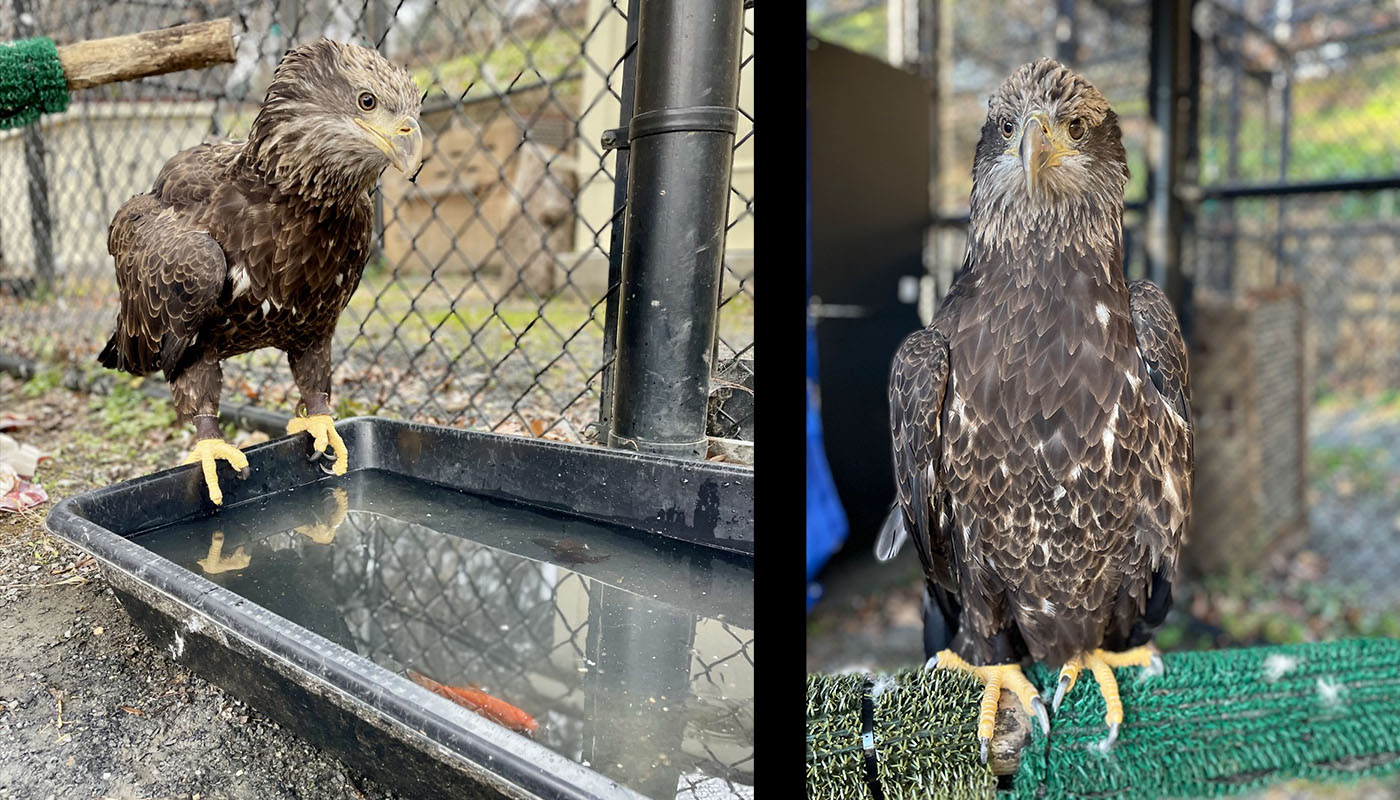
Does Acadia have a favorite enrichment item?
We give a variety of different enrichment items to eagles. Some items they can shred while others they can hold in their talons. Acadia enjoys shredding things such as paper. She also likes to hold onto enrichment items, such as Kong toys, with her talons and sometimes walk around with them.
Does Acadia participate in husbandry training?
Training eagles is a bit different then training some other animals. Eagles tend to discriminate, and it is important to build a relationship when working with them. After cleaning Acadia’s enclosure, we typically hand feed her a few pieces of cut up food, and then sit down in her stall for a bit to get her used to us. Before we leave, we usually give her some enrichment or another piece of food.
Our goal is to work with Acadia to become comfortable around people so she can someday come out on a glove for educational programs. Training has been going well. We were able to hand feed her within the first month. She is also now trained to voluntarily get on a scale for bi-weekly weights and will move around her enclosure to get on designated stumps or perches when asked. We have made some progress towards glove training and are confident that with time and consistency we will get there!
Does Acadia have a favorite food?
Bald eagles eat a variety of different animals including small mammals, birds, and fish. Acadia is not a picky eater and eats everything we offer her. Acadia’s diet consists of fish and frozen-thawed rats, mice and chicks. She does seem to really enjoy the special occasions when we give her a whole, frozen-thawed chicken.
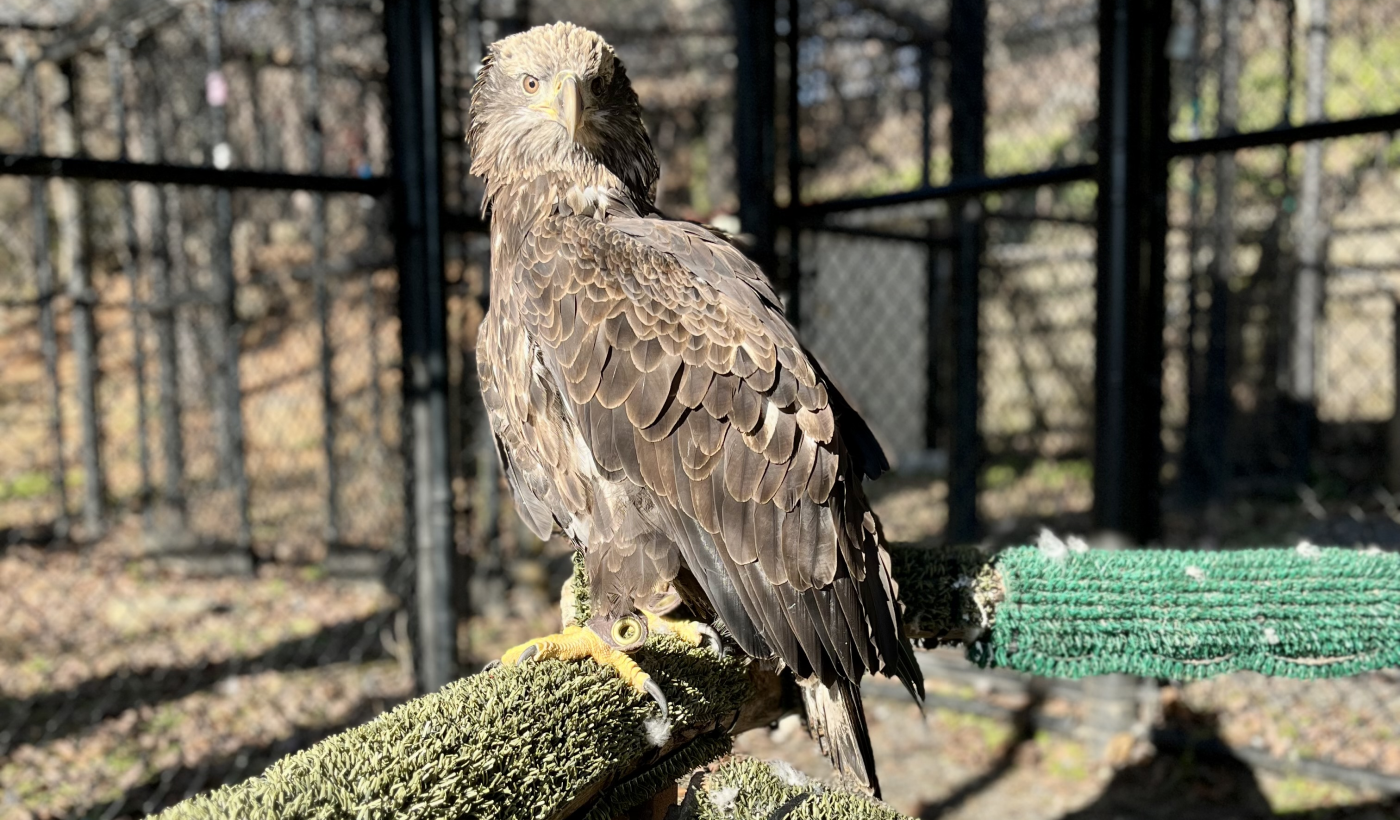
What do you enjoy most about working with bald eagles?
Bald eagles are a species you can now see right here around the zoo! There are several nests along the Potomac River where you can see them. It’s also pretty neat to work with an animal that is getting a second chance. Without zoological facilities and nature centers, injured birds of prey would not have a place to live.
How can folks at home help bald eagles?
Bald eagles were once listed as endangered by the International Union for Conservation of Nature; only 417 pairs were left in 1963. Thanks to strict regulations and tireless conservation efforts, the population has recovered. In 2007, they were removed from the Endangered Species List! However, bald eagles still face threats in the wild, including lead and rodenticide poisoning, illegal shooting, habitat loss and territorial disputes with other bald eagles.
The good news is you can help bald eagles thrive! Be a good steward of the environment by keeping the waters clean. An eagle’s primary food source is fish, so whatever pollutants fish are exposed to or consume, eagles are susceptible to as well. If you fish, remember to pick up fishing line and dispose of it properly. If line is left in the water or in a tree, an eagle could become entangled in it.
Be cautious about pest management, too. Birds of prey, including eagles, eat mice. Try not to use rodenticides, as they may kill more animals then intended.
Lastly, if you hunt, use alternative ammunition instead of lead. A recent study showed that 46% of bald eagles had chronic lead poisoning, and 27% to 33% of bald eagles had acute lead poisoning.
Keep an eye on the Zoo’s Facebook, Instagram and Twitter for more updates on Acadia’s debut. In the meantime, check out adult female Annie on American Trail when you plan your visit today.
Related Species:

